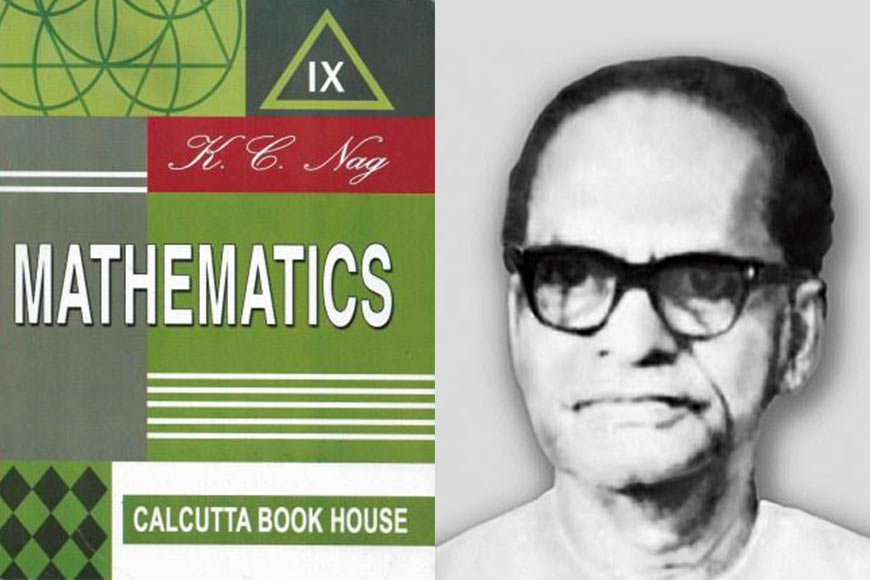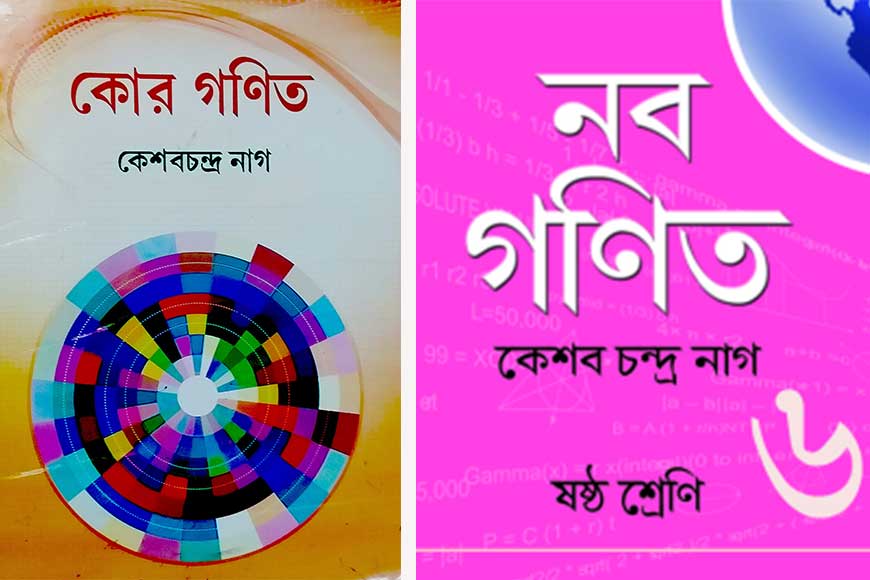K.C. Nag, the Mathematics teacher who once was an inseparable part of Bengali school-level studies - GetBengal story

Keshab Chandra Nag- Mathematics legend from Bengal
The great philosopher Socrates had once said, ‘I cannot teach anybody anything, I can only make them think’ and today we shall discuss two great teachers, both pioneers in their chosen field -- mathematics, who not only taught their students but impacted and inspired generations of Bengali students to the seminal subject -- Mathematics. Whenever we talk of Mathematics as a subject in our school days, there is probably not a single person among us, who will be able to dissociate the Mathematics book by Keshab Chandra Nag, popularly known as KC Nag in our school days.
Nag was born at Gurap in Hooghly, on the day of Rath Yatra (July 10, 1893). His father was Raghunath Nag and mother Khiroda Sundari Debi. He lost his father at an early age of three. Nag was a brilliant student who was admitted to the only primary school in his village in Gurap. When he was in Class VII, he was admitted to Bhastara Yojgeshshar Uchcha Vidyalaya (Yojgeshshar High School), three miles from his village. Every morning Nag would wake up and begin his long trek to reach school on time and again walk back three miles after school to reach home at dusk. He passed the ISC examinations with first division marks. In 1912, he passed the entrance examination with a First Class and joined Ripon College (now Surendranath College), in Science. In 1914, he passed the I.Sc examination with a First Class. After this, due to severe financial crisis he had to discontinue his education and start earning for the family. He started his career as Third Master in Bhastara Yojgeshshar Uccha Vidyalaya.
In 1917 Nag passed B.A with Mathematics and Sanskrit. He then received a job offer from Kishenganj High School as a Mathematics Teacher. He taught for some time in that School, after which he got another offer from Baharampur’s Krishnanath Collegiate School and joined the school as a mathematics teacher.
 Some of K. C. Nag's books on mathematics
Some of K. C. Nag's books on mathematics
He then graduated with Mathematics, Sanskrit and Arts and joined Krishnanath Collegiate School in Berhampore as a Mathematics teacher. In 1905 Sir Ashutosh Mukhopadhay established Mitra Institution (Branch) in Bhowanipore. The very next year, he became the Vice Chancellor of Calcutta University and recruited the best brains from across the country as teachers to establish Calcutta University as one of the best in India. Sir Ashutosh had heard about Keshab Chandra, and he offered him a job at Mitra Institution, Bhawanipore as a teacher of Mathematics.
Nag’s way of teaching endeared him to Sir Ashutosh. Nag was in love with mathematics and all his life he strived to ignite this passion for mathematics in the minds of students during their vital formative years. He conceived of ingenious methods to make the subject interesting and easy for his students. He eventually became the headmaster of the school in 1956 and served the post till 1960. Noted personalities like Hemanta Mukhopadhyay, Subhas Mukherjee, Tarun Banerjee, Arjun Sengupta, Siddharta Shankar Ray were all his students.
Nag was coaxed by his friends Kabishekhar Kalidas Roy, novelist Sarat Chandra Chattopadhyay, Premendra Mitra and many others to write books on mathematics. Finally, he wrote Naba Patiganit. The book was very well received and became immensely popular among students of class V and VI. In 1942, Matric Mathematics, one of the famous books of K.C. Nag was published. This book was used extensively as an easy handbook/guide book by mathematics teachers in schools. After this, he wrote 42 more books on mathematics for various classes from IV to XII. These books were published in Bengali, English, Hindi, Urdu, and Nepali languages.
 From 1925 to 1980, he maintained a diary that he named Ratna Bedi where he compiled his poems, songs, and light-hearted shaggy dog-stories. He was a freedom fighter and participated in Mahatma Gandhi's ‘Quit India’ Movement. He was imprisoned by the British police during this time. Nag was an avid sports enthusiast and had tremendous interest in cricket, football and tennis. He was a life member of Mohun Bagan Club. He was a die-hard cricket follower and unfortunately it was his fanaticism for the game that was partially responsible for his demise. On February 1, 1985, the second day of the fifth Test was on between India and England. India was batting and at the day’s end declared its first innings at 525 for seven wickets. Nag was extremely tensed during the match and suddenly suffered a cerebral attack. He survived for two years after the attack but died on February 6, 1987.
From 1925 to 1980, he maintained a diary that he named Ratna Bedi where he compiled his poems, songs, and light-hearted shaggy dog-stories. He was a freedom fighter and participated in Mahatma Gandhi's ‘Quit India’ Movement. He was imprisoned by the British police during this time. Nag was an avid sports enthusiast and had tremendous interest in cricket, football and tennis. He was a life member of Mohun Bagan Club. He was a die-hard cricket follower and unfortunately it was his fanaticism for the game that was partially responsible for his demise. On February 1, 1985, the second day of the fifth Test was on between India and England. India was batting and at the day’s end declared its first innings at 525 for seven wickets. Nag was extremely tensed during the match and suddenly suffered a cerebral attack. He survived for two years after the attack but died on February 6, 1987.
He left behind a rich legacy of books on mathematics which are still indispensable for students from Class V to Class X who love the subject and actually think of approaching a problem from different angles and to Henry B. Adams who said, “A teacher affects eternity; he can never tell where his influence stops.” Keshab Chandra Nag, the ultimate mathematics teacher, will live on in the minds of students in their formative years of learning, who dispelled all their fears and doubts of numbers and inspired them to set higher goal for themselves.









